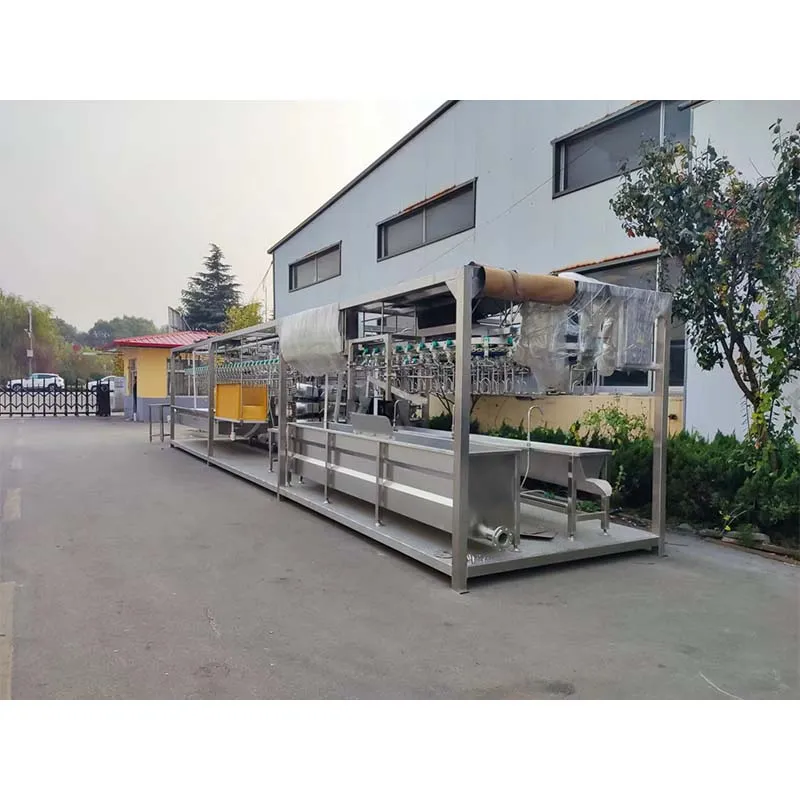Innovative Storage Solutions for Square Grain Silos and Their Benefits for Farmers
Dec . 01, 2024 05:11 Back to list
Innovative Storage Solutions for Square Grain Silos and Their Benefits for Farmers
Square Grain Silos An Innovative Approach to Grain Storage
In the agricultural industry, the effective storage of grain is a critical aspect that can significantly impact a farmer's overall productivity and profitability. Traditional cylindrical silos have dominated the market for decades, but the emergence of square grain silos has started to offer a novel approach to grain storage. These structures present a range of benefits that resonate well with today’s agricultural practices, providing both cost-effectiveness and efficiency.
Space Efficiency
One of the primary advantages of square grain silos lies in their space efficiency. Unlike cylindrical silos, which take up a circular area, square silos can be placed side by side, maximizing the use of available space. This is particularly advantageous for farmers with limited land who wish to optimize their storage capabilities. Not only do square silos allow for a more efficient footprint, but they also facilitate better layout planning in storage facilities, making them a preferred choice for modern farms looking to utilize their land effectively.
Cost-Effectiveness
From a financial perspective, square grain silos can offer substantial savings. The design of these silos allows for more straightforward construction methods, which can reduce labor costs and time. Additionally, their structural integrity means they often need fewer materials than traditional silos, translating to lower overall costs. Farmers can also benefit from reduced operational expenses due to their easy-to-manage design, which often includes features that streamline loading and unloading processes.
Improved Accessibility
square grain silos

Square grain silos also enhance accessibility for both farmers and equipment. Their shape allows for easier access from multiple sides, making loading, inspecting, and maintaining grain much simpler. This increased access can lead to improved operational efficiency, as farmers can manage their inventory without needing elaborate equipment to navigate around the curvilinear bases of traditional silos. Furthermore, these silos often come with features that enable better airflow and pest control, which are critical for maintaining grain quality.
Versatility and Modularity
Another significant benefit of square grain silos is their versatility. They can be designed in various sizes and configurations to meet the specific needs of any agricultural operation. Modular designs allow for expandable systems, meaning that farmers can start with a few square silos and later add more as their storage needs grow. This adaptability is essential in an industry that is constantly evolving, enabling farmers to scale their operations without needing to overhaul their entire storage solution.
Environmental Considerations
In an age where sustainability is at the forefront of agricultural practices, square grain silos can offer eco-friendly benefits. Their design can incorporate green technologies such as solar panels for energy needs or rainwater collection systems to decrease water consumption. Additionally, the durability of these structures often leads to longer lifespans compared to traditional silos, reducing the need for replacement and the associated resource consumption.
Conclusion
In conclusion, square grain silos represent an innovative and efficient solution for modern agricultural storage needs. Their space efficiency, cost-effectiveness, improved accessibility, versatility, and potential for environmental sustainability make them an appealing option for farmers looking to enhance their operations. As the agricultural sector continues to adapt to challenges posed by changing climatic conditions and evolving market demands, square grain silos provide a practical and forward-thinking approach to grain storage, ensuring that farmers can maintain the quality and quantity of their produce while optimizing their resources. The increasing adoption of square silos is a testament to the industry's willingness to embrace new ideas and technology in pursuit of better agricultural practices.
-
Automatic Feeding Line System-Pan Feeder Nipple Drinker|Anping County Yize Metal Products Co., Ltd.
NewsJul.29,2025
-
Hot Sale 24 & 18 Door Rabbit Cages - Premium Breeding Solutions
NewsJul.25,2025
-
Automatic Feeding Line System Pan Feeder Nipple Drinker - Anping County Yize Metal Products Co., Ltd.
NewsJul.21,2025
-
Automatic Feeding Line System Pan Feeder Nipple Drinker - Anping County Yize Metal Products Co., Ltd.
NewsJul.21,2025
-
Automatic Feeding Line System - Anping Yize | Precision & Nipple
NewsJul.21,2025
-
Automatic Feeding Line System - Anping Yize | Precision & Nipple
NewsJul.21,2025






